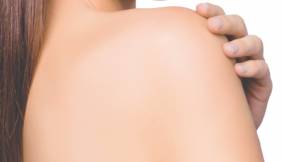The skin of the scalp only differs from the rest of the body because of the abundance of large hair follicles, which are drained by the sebaceous glands. Indeed, one of the most common scalp problems is excess oil. If this disorder coincides with a flaking condition, the problem is worse, as that excess oil causes the flakes to appear yellow in color and remain attached to the scalp.
These symptoms are common to both oily dandruff problems and seborrhoeic dermatitis of the hair, but in reality, they are different conditions, which we can differentiate with the help of the following table.
| OILY DANDRUFF | SEBORRHOEIC DERMATITIS | ||
| WHAT IS IT? | Greasy flaking of the scalp without redness orsignificant irritation caused by excess production of skin layers. | Localised areas with redness, irritation and greasyflaking with a yellow tone. | |
| ORIGIN | Excess grease - Increased microbial load - Greaterproduction of skin layers. | The cause is not known. Could be caused by hormonal,immunological, nutritional, environmental, psychological factors, etc. | |
| SYMPTOMS | Itchy scalp. Greasy, yellow flakes. Sebaceous hypersecretion. | Itchy scalp. Scratching can cause wounds. Irritation, rashes and inflammation. Scabs on the scalp. Flaking. Sebaceous hypersecretion. | |
| VISUAL CHARACTERISTICS | Hair that becomes greasy very easily and a flaky scalp (can cause hair loss). | ||
| WHO IS AFFECTED? | Can appear at any age, but predominantly in peoplewith excess oil production | Can appear at any age, but predominantly in:
| |
| PHARMACOLOGICAL TREATMENT | As it is not considered an "illness" ,its treatment is strictly dermocosmetic. | Mild cases can be treated withdermocosmetics, but in severe cases, it is necessary to prescribemedical anti-fungal shampoos with a keratolytic action. | |



